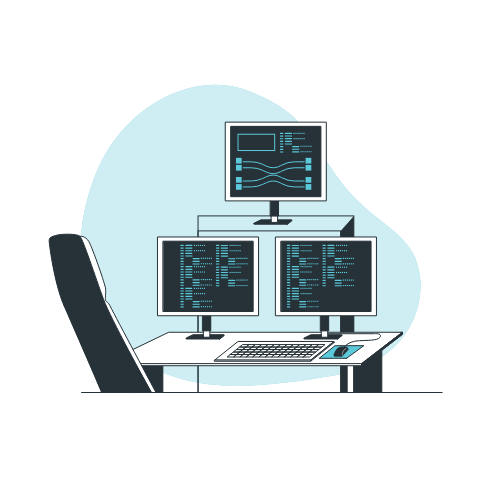In the dynamic realm of software development, staying at the forefront demands an embrace of innovative approaches. The software industry is defined by perpetual change, witnessing the regular emergence of new technologies and methodologies. Yet, what key elements should one seek in these cutting-edge strategies, and how can they amplify business success? This article delves into the most promising and disruptive approaches to software development, offering insights into how businesses can harness their potential for driving success in an ever-evolving landscape.
The Evolution of Software Development
Modern software development hinges on innovative practices, emphasizing agility, collaboration, and continuous improvement. These approaches empower businesses to swiftly respond to market demands, offering several advantages:
- Faster Time-to-Market: Innovative development allows for quicker product releases, keeping you ahead of the competition.
- Enhanced User Experiences: Prioritizing user-centric design and functionality enhances the overall user experience, aligning software with evolving customer needs.
- Adaptability: Innovative methods foster adaptability, enabling teams to navigate changes and challenges effectively.
The Agile methodology, with its focus on iterative development and stakeholder collaboration, catalyzes these forward-thinking practices in software development.
Innovative Approaches to Development
DevOps Culture
Continuous Integration and Continuous Deployment (CI/CD)
CI/CD pipelines efficiently streamline development and deployment processes, facilitating the swift and dependable delivery of software updates. Automation is pivotal in maintaining code quality and consistency across the entire development cycle, ensuring a seamless and reliable workflow.
Automation and Orchestration
Automation tools diminish manual tasks, boosting efficiency and liberating your team to concentrate on higher-value activities. Orchestration is instrumental in ensuring the seamless integration of various components within your software ecosystem.
DevOps Case Study: A standout illustration of DevOps triumph is Amazon. Their CI/CD pipeline enables rapid deployment of changes to their extensive online platform. This strategic approach has been pivotal in maintaining Amazon’s competitive edge within the e-commerce industry.
Microservices Architecture
Microservices entail the decomposition of monolithic applications into smaller, loosely coupled services. This approach provides:
- Scalability: You can scale individual services as needed, rather than the entire application.
- Flexibility: Microservices allow for independent development and deployment, enabling faster updates and bug fixes.
Containerization with Docker and Kubernetes
Containers like Docker streamline the deployment and management of microservices. Kubernetes, an orchestration tool, automates the scaling and operation of containerized applications.
Microservices Case Study: Netflix serves as a prime example of microservices in action. Leveraging microservices, they provide personalized content recommendations to millions of users, ensuring a seamless streaming experience.
Serverless Computing
Event-Driven Architecture
Serverless computing operates on an event-driven model, where functions or services are triggered by specific events. This approach provides:
- Cost Efficiency: You only pay for the computing resources you use during execution.
- Scalability: Serverless platforms automatically handle scaling, ensuring your application can handle varying workloads.
Serverless Case Study: AWS Lambda stands out as a trailblazer in serverless computing. Notable companies like Airbnb leverage Lambda for efficient handling of image processing tasks, showcasing its cost-effectiveness and scalability.
Low-Code/No-Code Development
Democratizing Development
Low-code and no-code platforms empower users with minimal coding skills to create applications, fostering collaboration and expediting development.
Faster Prototyping
Low-code development facilitates swift prototyping, allowing rapid testing and refinement of ideas before committing to full-scale development.
Low-Code/No-Code Case Study: Salesforce’s low-code platform empowers organizations to customize CRM systems without extensive coding. This revolutionizes CRM customization, accelerating businesses’ agility in adapting to changing customer needs.
Artificial Intelligence and Machine Learning Integration
AI in Software Testing
Artificial intelligence is revolutionizing software testing through automated test case generation, anomaly identification, and the prediction of potential issues.
Personalization and Predictive Analytics
Incorporating AI and machine learning into your software can offer personalized user experiences and empower data-driven decision-making capabilities.
AI Integration Case Study: Netflix utilizes AI to analyze user preferences and provide content recommendations. This personalized approach has significantly enhanced user engagement and retention.
Evaluating Innovative Approaches
When contemplating the adoption of innovative development practices, it’s crucial to evaluate your specific needs and associated risks.
Assessing Business Needs
- Customization vs. Off-the-Shelf: Determine whether building custom solutions or leveraging existing platforms aligns with your requirements.
- Scalability and Future-Proofing: Ensure that the chosen approach can accommodate your business’s growth strategy.
Risk Management
- Security and Compliance: Address security concerns and compliance requirements that may be associated with innovative development.
- Cost Analysis: Evaluate the potential cost implications of adopting these innovative approaches and ensure alignment with your budget.
Change Management
- Organizational Culture: Prepare your organization for a cultural shift that embraces innovation and continuous improvement.
- Skillset Enhancement: Invest in training and development to equip your team with the skills needed for these innovative practices.
Harnessing the Power of Innovation in Software Development
Embracing innovative development approaches is paramount for maintaining competitiveness in the software industry. The real-world examples and insights shared in this article illustrate how these approaches can result in swifter, more efficient, and more user-centric software development.
By comprehending and incorporating these innovative practices, you can elevate your development prowess and propel business success. Seize the future of software development, stay ahead of the curve, and position your business for sustained, long-term growth.




